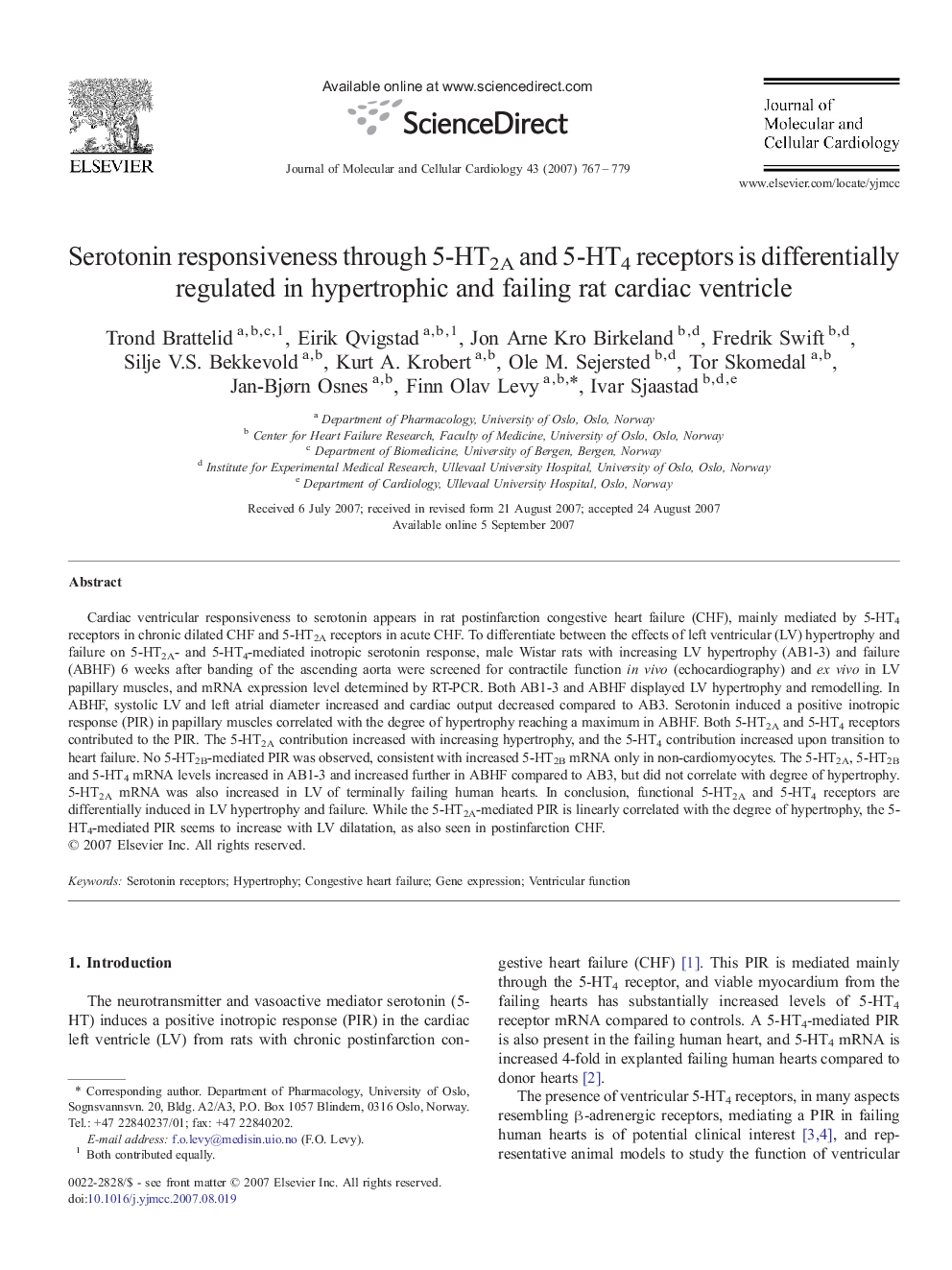| Article ID | Journal | Published Year | Pages | File Type |
|---|---|---|---|---|
| 2192108 | Journal of Molecular and Cellular Cardiology | 2007 | 13 Pages |
Cardiac ventricular responsiveness to serotonin appears in rat postinfarction congestive heart failure (CHF), mainly mediated by 5-HT4 receptors in chronic dilated CHF and 5-HT2A receptors in acute CHF. To differentiate between the effects of left ventricular (LV) hypertrophy and failure on 5-HT2A- and 5-HT4-mediated inotropic serotonin response, male Wistar rats with increasing LV hypertrophy (AB1-3) and failure (ABHF) 6 weeks after banding of the ascending aorta were screened for contractile function in vivo (echocardiography) and ex vivo in LV papillary muscles, and mRNA expression level determined by RT-PCR. Both AB1-3 and ABHF displayed LV hypertrophy and remodelling. In ABHF, systolic LV and left atrial diameter increased and cardiac output decreased compared to AB3. Serotonin induced a positive inotropic response (PIR) in papillary muscles correlated with the degree of hypertrophy reaching a maximum in ABHF. Both 5-HT2A and 5-HT4 receptors contributed to the PIR. The 5-HT2A contribution increased with increasing hypertrophy, and the 5-HT4 contribution increased upon transition to heart failure. No 5-HT2B-mediated PIR was observed, consistent with increased 5-HT2B mRNA only in non-cardiomyocytes. The 5-HT2A, 5-HT2B and 5-HT4 mRNA levels increased in AB1-3 and increased further in ABHF compared to AB3, but did not correlate with degree of hypertrophy. 5-HT2A mRNA was also increased in LV of terminally failing human hearts. In conclusion, functional 5-HT2A and 5-HT4 receptors are differentially induced in LV hypertrophy and failure. While the 5-HT2A-mediated PIR is linearly correlated with the degree of hypertrophy, the 5-HT4-mediated PIR seems to increase with LV dilatation, as also seen in postinfarction CHF.
